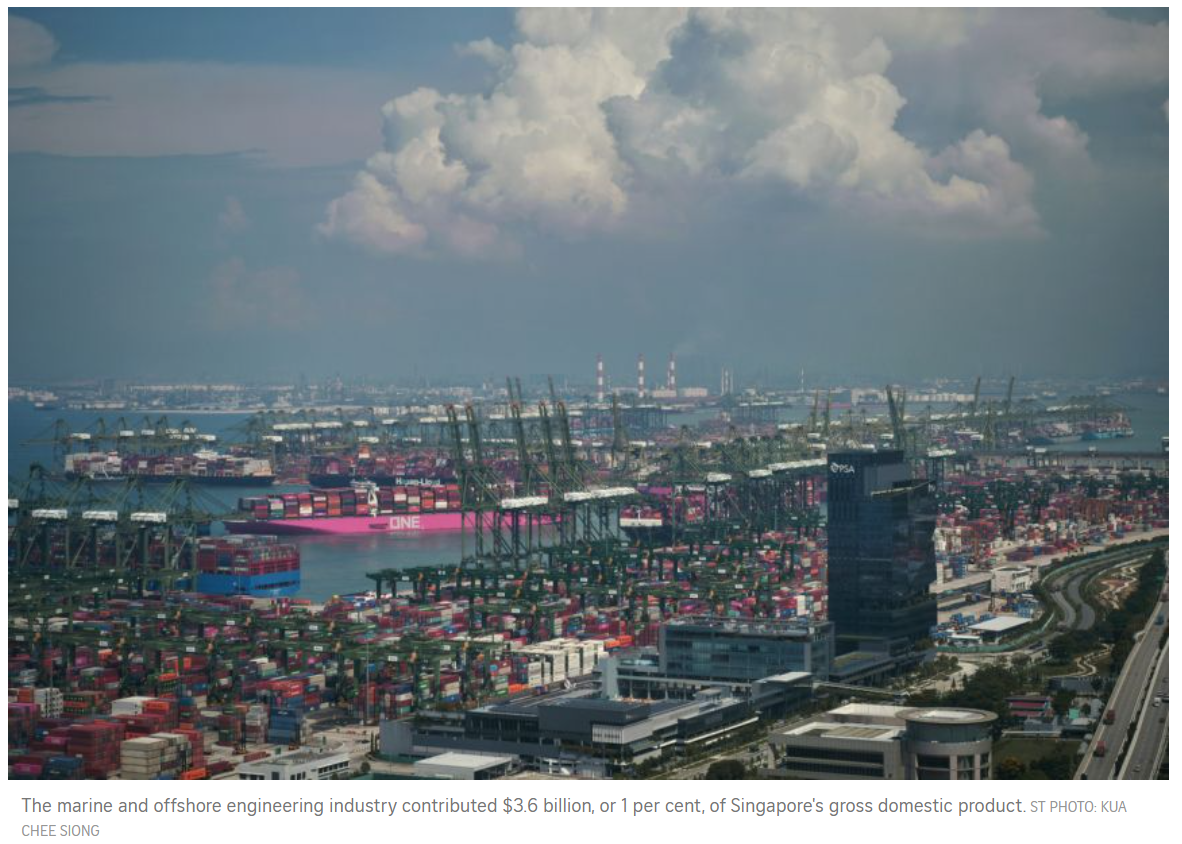Singapore updating plan to lift competitiveness of marine and offshore engineering sector amid Covid-19 and climate change
SINGAPORE – To keep the marine and offshore engineering sector in Singapore buoyant, a plan to boost its competitiveness is being updated by government agencies to account for disruptors such as Covid-19 and climate change.
Dr Tan See Leng, Second Minister for Trade and Industry, told Parliament on Tuesday (July 27) that the refreshed industry transformation map for the sector – which includes shipbuilding and repair, rig building and marine equipment – is slated to be launched in 2022.
“We expect offshore renewables and offshore carrier transport of hydrogen to be among the areas of opportunity in the refreshed map,” he said in response to questions raised by Dr Tan Wu Meng (Jurong GRC).
The latter had asked the Ministry of Trade and Industry (MTI) for an update on transformation plans for the carbon-intensive marine and offshore engineering sector. It was affected by negative oil prices due to Covid-19 lockdowns last year, and is expected to be impacted by a global push to tackle climate change, which entails shifting away from fossil fuels.
The marine and offshore engineering industry contributed $3.6 billion, or 1 per cent, of Singapore’s gross domestic product, and employed more than 23,000 workers in 2016.
Dr Tan Wu Meng also asked for MTI’s assessment of whether the country could be a hub for emerging technologies that can help companies slash their carbon footprint.
These include hydrogen – a fuel that produces no planet-warming carbon dioxide when burnt – and carbon capture, utilisation and storage.
Dr Tan See Leng said Singapore plans to use these technologies to help it meet the goal of reaching net-zero emissions. However, using hydrogen as a fuel comes with disadvantages, he added, including high storage and transportation costs.
As hydrogen is a gas with a boiling point far lower than that of natural gas, it is considered flammable and requires a “significant engineering challenge” to transport and store it in a commercially viable manner.
Singapore is looking into a few strategies to overcome this, Dr Tan See Leng said. These include transporting hydrogen as ammonia (which is a compound of hydrogen and nitrogen and comparatively easier to handle), liquefied hydrogen, or through liquid organic hydride carriers.
However, all come with challenges. For instance, liquid organic hydride carriers are less hydrogen-dense. “This means a relatively higher cargo footprint would be needed to import the same amount of hydrogen. The process required to release hydrogen from (these carriers) can also be land and energy-intensive,” he added.
He said Singapore is keen to realise the decarbonisation potential of hydrogen and develop into a regional hydrogen hub.
“Government agencies will continue to monitor the technological and market developments to ensure that Singapore maintains its competitiveness,” he added.
On carbon capture, Dr Tan See Leng said the country lacks known geological formations that are suitable for the permanent storage of carbon dioxide underground.
“We are therefore exploring partnerships with companies and other countries with suitable geological formations to enable carbon dioxide storage opportunities,” he said.
As for carbon capture and utilisation, he added that the Republic is looking into converting carbon dioxide into waste-based feedstock or natural minerals that can be used to produce aggregates for reclamation or building materials.
Source: https://www.straitstimes.com/singapore/politics/spore-updating-plan-to-lift-competitiveness-of-marine-and-offshore-engineering


 English
English




